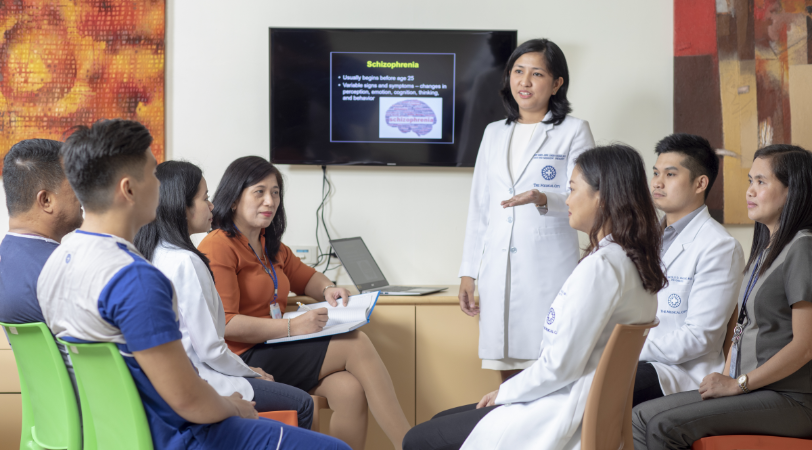The Medical City Neurology Center
4/F Podium Bldg.
Contact Numbers
(632) 8-988-1000/(632) 8-988-7000 loc. 6270
Open daily from 8:00AM to 5:00PM except Sundays and Holidays
All procedures are by appointment only.
The Stroke Unit and Neurologic Intensive Care Unit provides specialized, state-of-the-art care for acute neurological conditions and stroke treatment in the Philippines. Led by expert neurologists and equipped with advanced technology, we prioritize swift intervention and comprehensive management to optimize outcomes for patients facing critical neurological challenges.
PATIENT SERVICES
Acute Stroke Unit (ACSU) and Neurologic Intensive Care Unit (NICU)

What is a Stroke?
A stroke occurs when blood flow to the brain is disrupted, leading to damage to brain cells. This can result from a blocked artery (ischemic stroke) or bleeding in the brain (hemorrhagic stroke).
What are the Different Types of Strokes?
Strokes are generally classified into two main types: ischemic strokes and hemorrhagic strokes. Each type has distinct causes, characteristics, and treatment approaches.
Ischemic Stroke
- Thrombotic Stroke: Caused by a blood clot (thrombus) forming in one of the arteries supplying the brain. Often associated with atherosclerosis (buildup of fatty deposits in the arteries)
- Embolic Stroke: Caused by an embolus (a blood clot or other debris) traveling to the brain from another part of the body, typically the heart. Atrial fibrillation, a heart rhythm disorder, is a common cause
Hemorrhagic Stroke
- Intracerebral Hemorrhage: Occurs when a blood vessel within the brain ruptures, leading to bleeding into the surrounding brain tissue
- Subarachnoid Hemorrhage: Involves bleeding into the space between the brain and the surrounding membrane. Often caused by the rupture of an aneurysm.
Transient Ischemic Attack (TIA)
Often referred to as a "mini-stroke," a TIA is a temporary disruption of blood flow to the brain, resulting in stroke-like symptoms that resolve within a short time (usually less than 24 hours). TIAs are warning signs that should not be ignored.
Cryptogenic Stroke
Some strokes have an unknown cause, and these are termed cryptogenic strokes. Despite thorough investigation, the exact cause remains unidentified.
Individuals experiencing symptoms of a stroke, such as sudden numbness, weakness, confusion, or difficulty speaking, should seek immediate medical attention. The type of stroke influences the treatment approach, emphasizing the importance of prompt and accurate diagnosis.
How Do I Know If I'm Having a Stroke?
The common symptoms of a stroke are often summarized using the FAST acronym:
- Face: Sudden drooping or numbness, especially on one side of the face
- Arm: Sudden weakness or numbness in one arm
- Speech: Difficulty speaking, slurred speech, or difficulty understanding speech
- Time: Time is critical; if these symptoms occur, it's important to seek emergency medical attention immediately
Do the Symptoms of a Stroke in a Male Differ from Those in a Female?
In some cases, women may experience additional symptoms or variations, and these can include:
- Hiccups or Nausea: Women may experience hiccups or nausea during a stroke, which may not be as commonly observed in men
- Shortness of Breath: Women might experience sudden shortness of breath, more so than men during a stroke
- Chest Pain or Discomfort: While chest pain is often associated with heart attacks, women might experience chest pain or discomfort during a stroke
- General Weakness: Women may have more generalized weakness rather than specific weakness in one arm
It's important to note that these differences are not absolute, and anyone, regardless of gender, should be aware of the common symptoms of a stroke and seek immediate medical attention if they suspect a stroke is occurring. Rapid intervention is crucial for minimizing damage and improving outcomes.
Who is More Likely to Have a Stroke?
Risk factors include age, high blood pressure, smoking, diabetes, and family history. Individuals with cardiovascular diseases, obesity, and high cholesterol are also at increased risk.
Is a Stroke Serious?
Yes, strokes are medical emergencies and can lead to long-term disability or death. Timely intervention is crucial to minimize damage and improve outcomes. Fast medical response is vital for optimal recovery.
What Does a Stroke Do?
A stroke deprives brain cells of oxygen, causing impaired function corresponding to the affected brain area. Effects range from mild, transient issues to severe, lasting disabilities affecting speech, movement, and cognitive abilities.
How Do You Treat Stroke?
Stroke treatment in the Philippines varies based on stroke type. Ischemic strokes may be treated with clot-busting drugs or mechanical thrombectomy. Hemorrhagic strokes may require surgery. Post-stroke rehabilitation, medications, and lifestyle changes are crucial for recovery and prevention. Early intervention is key.